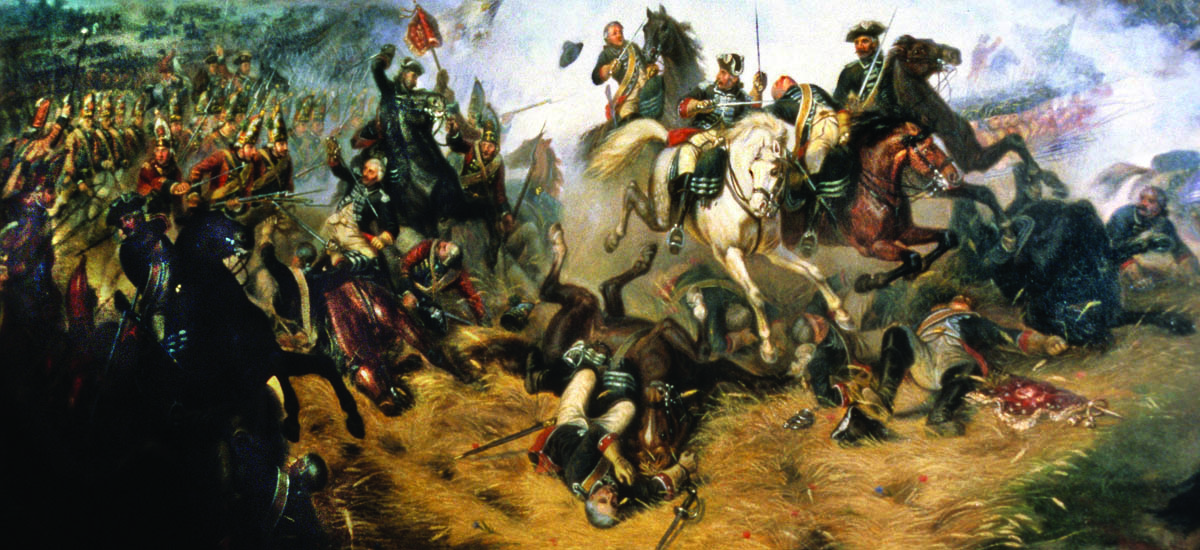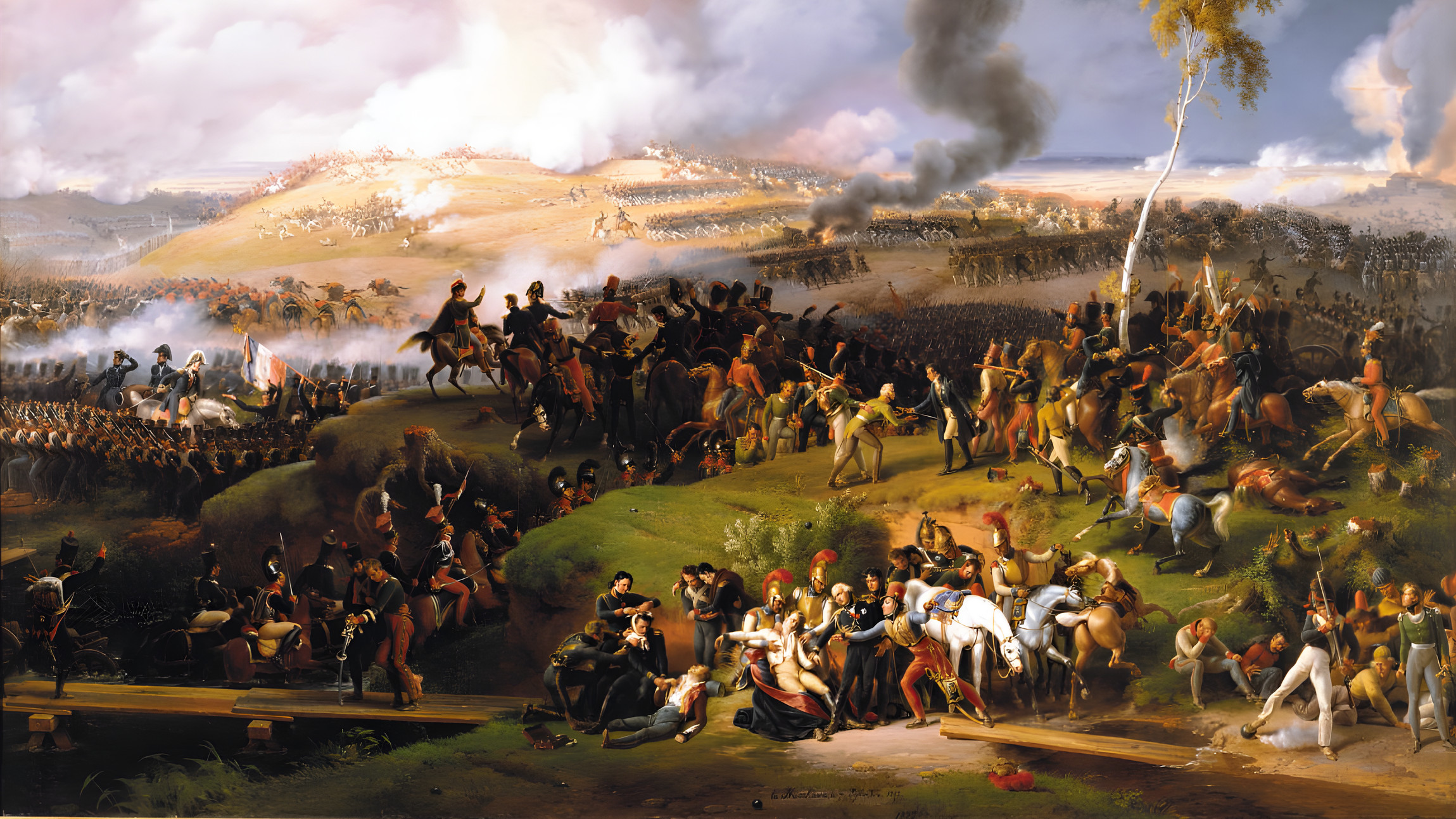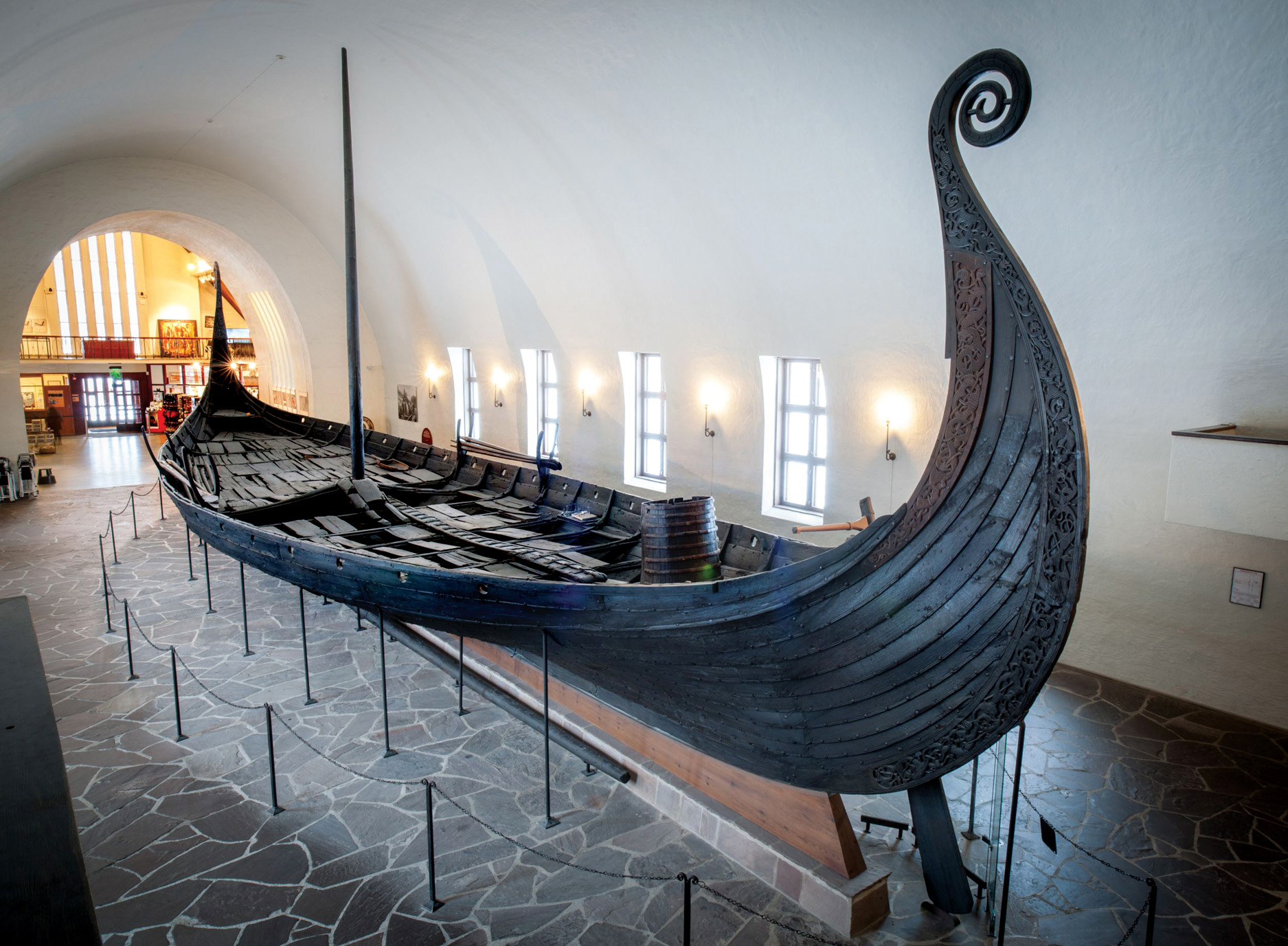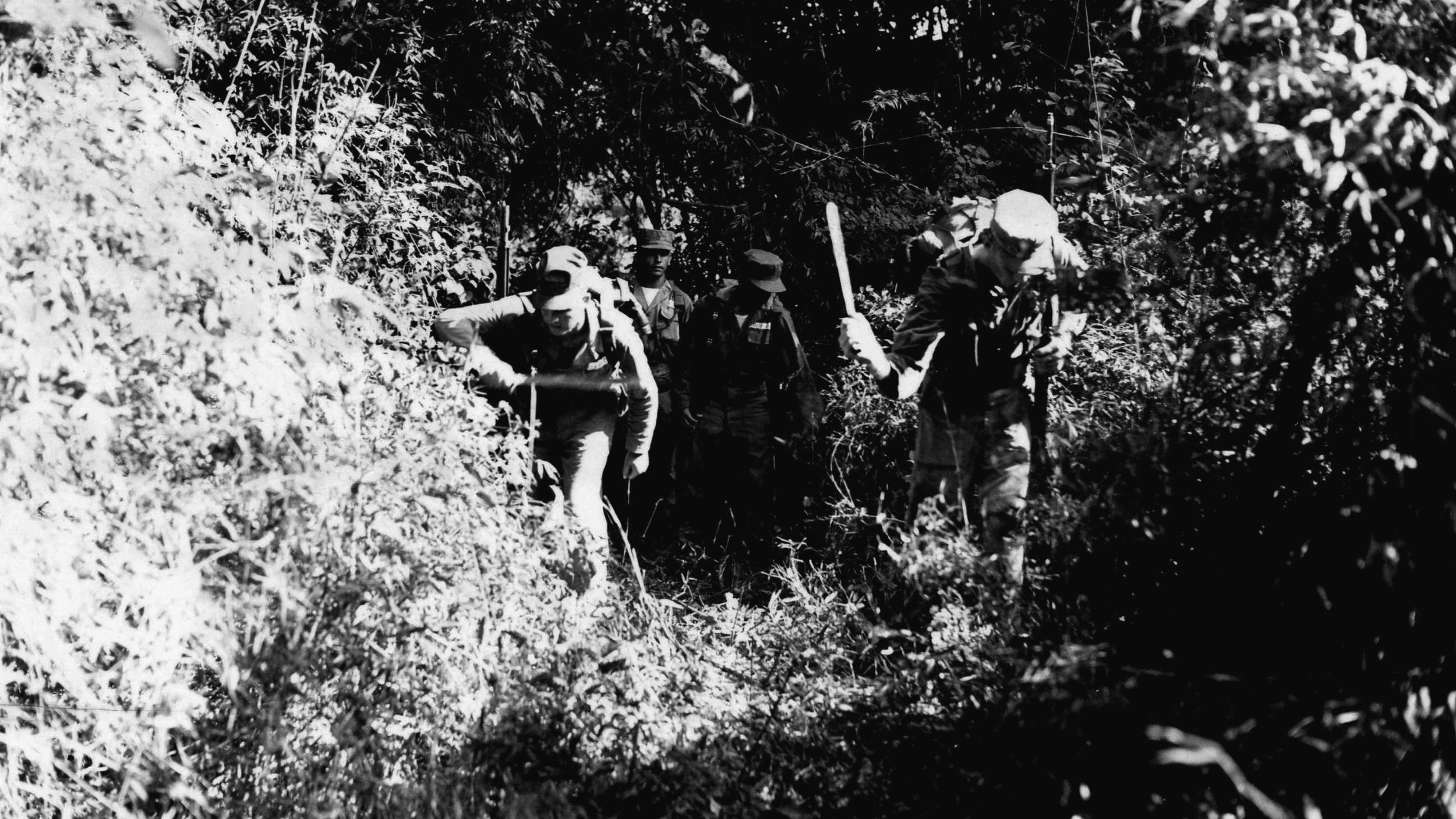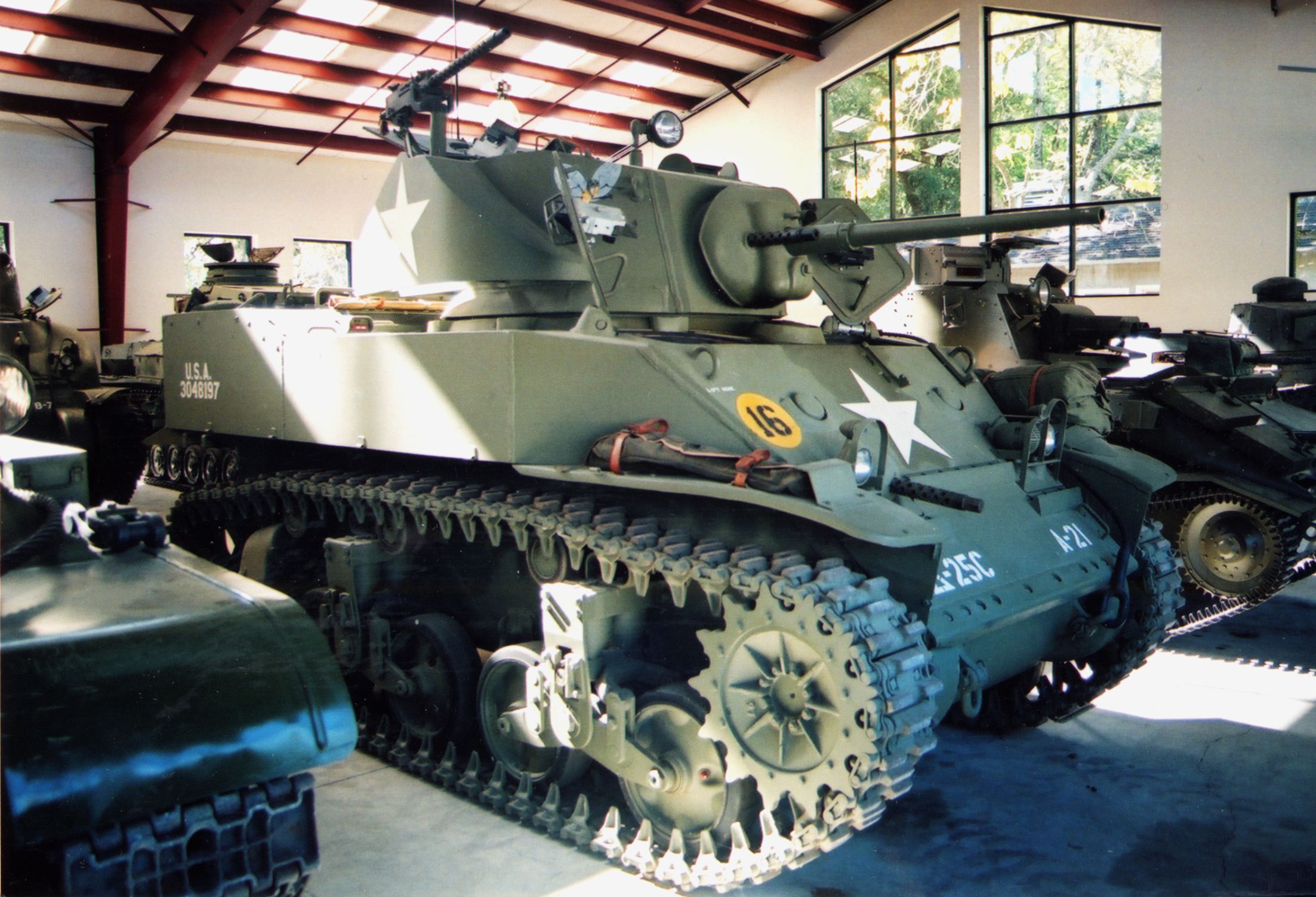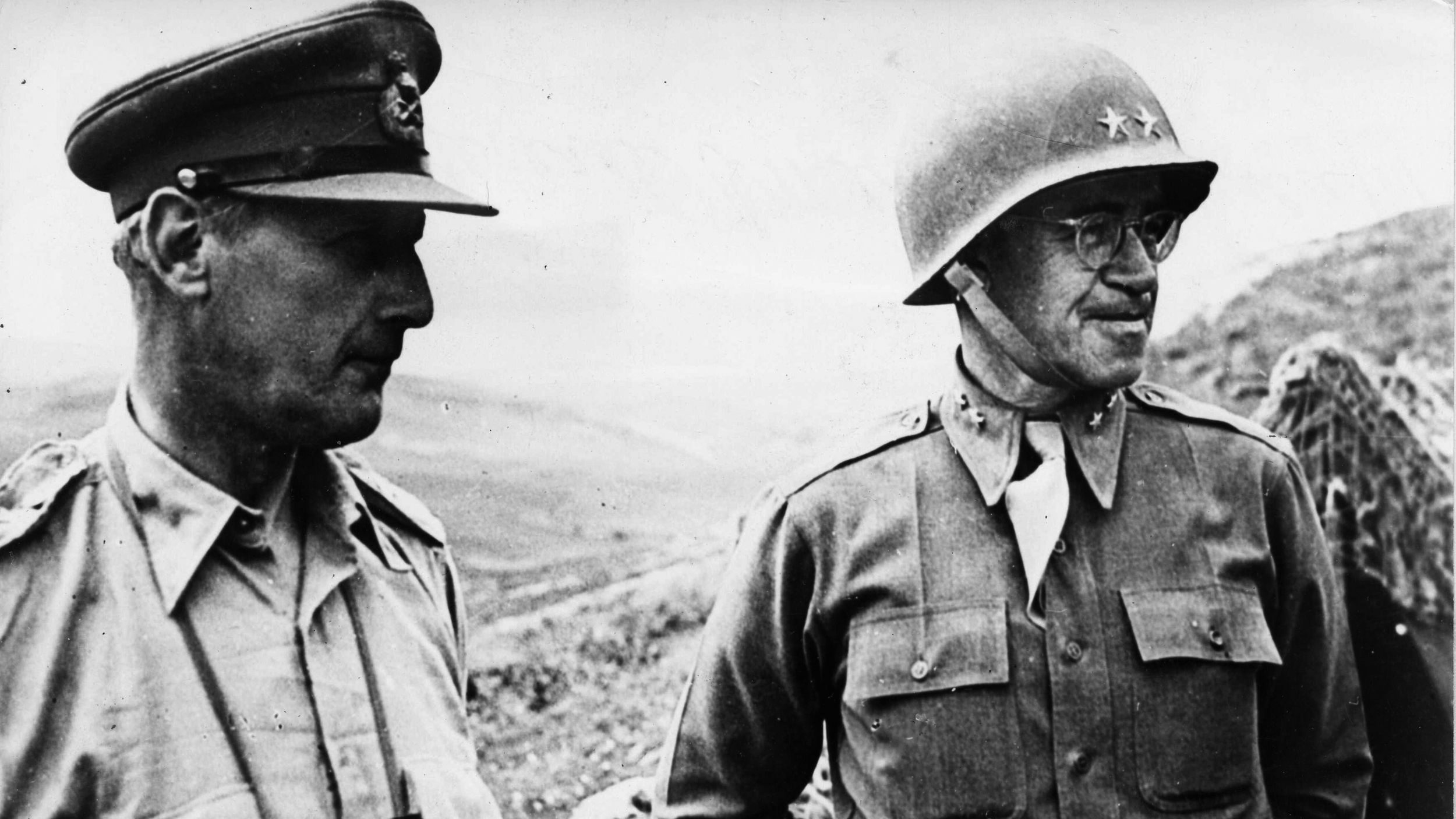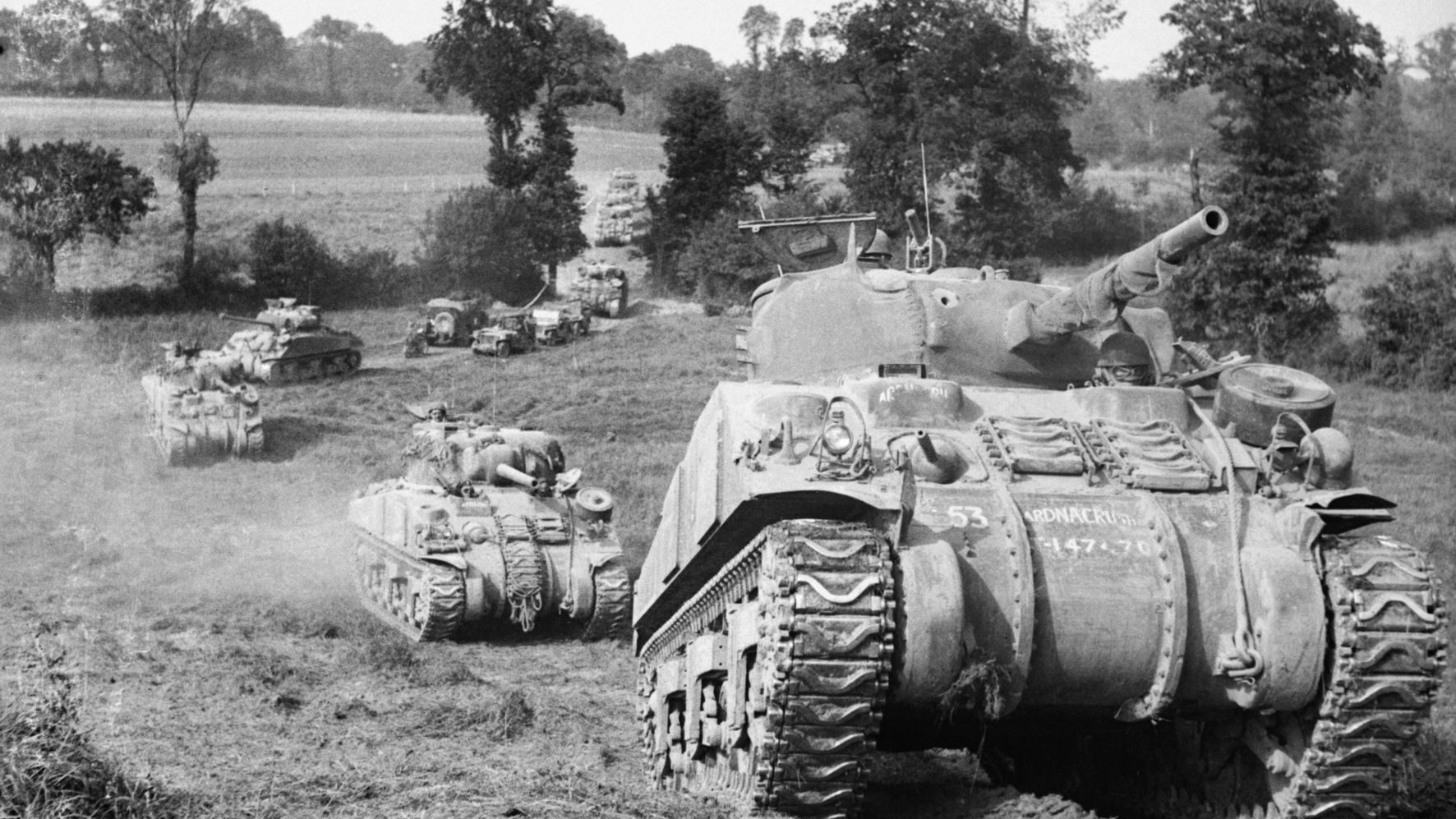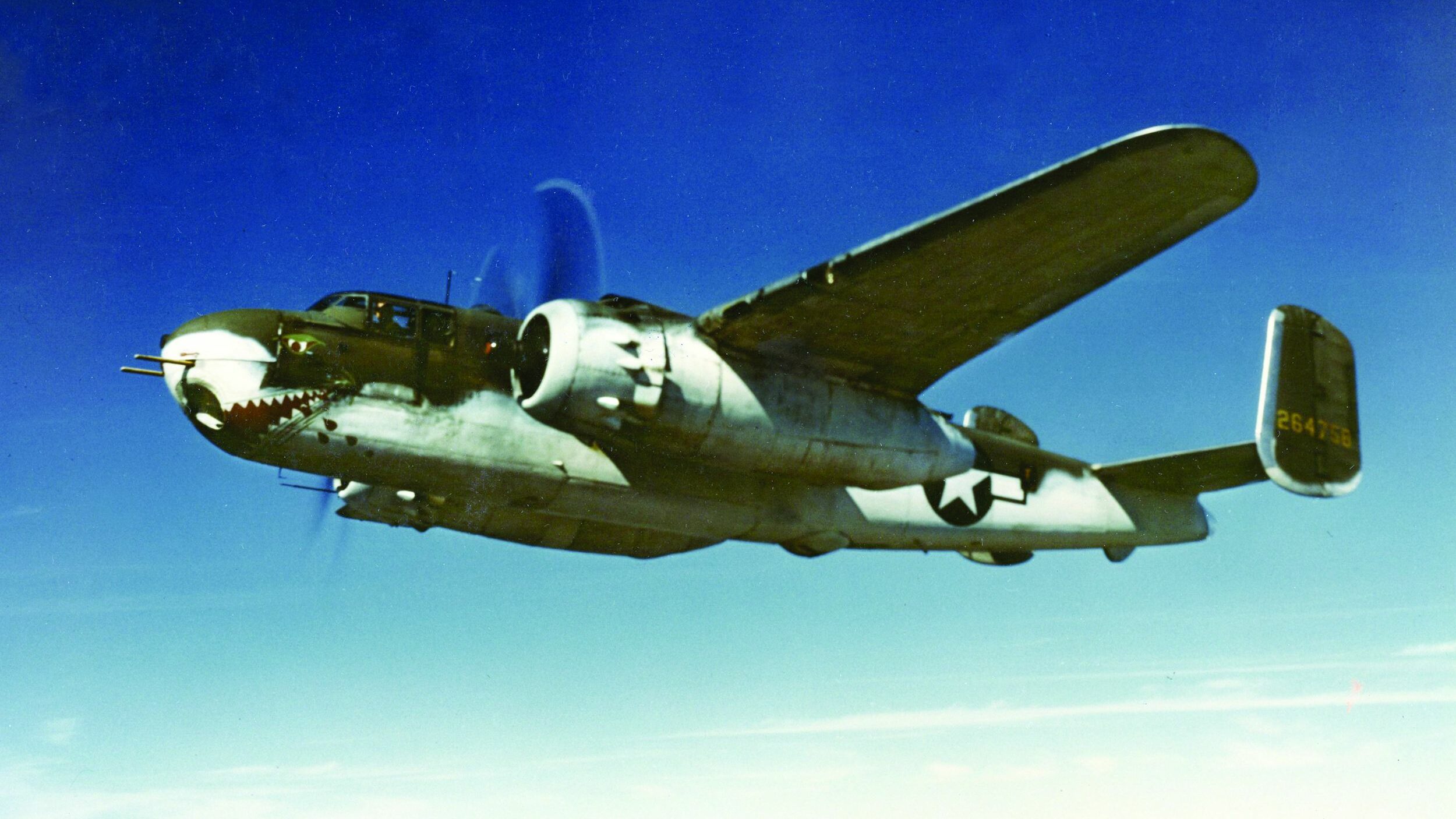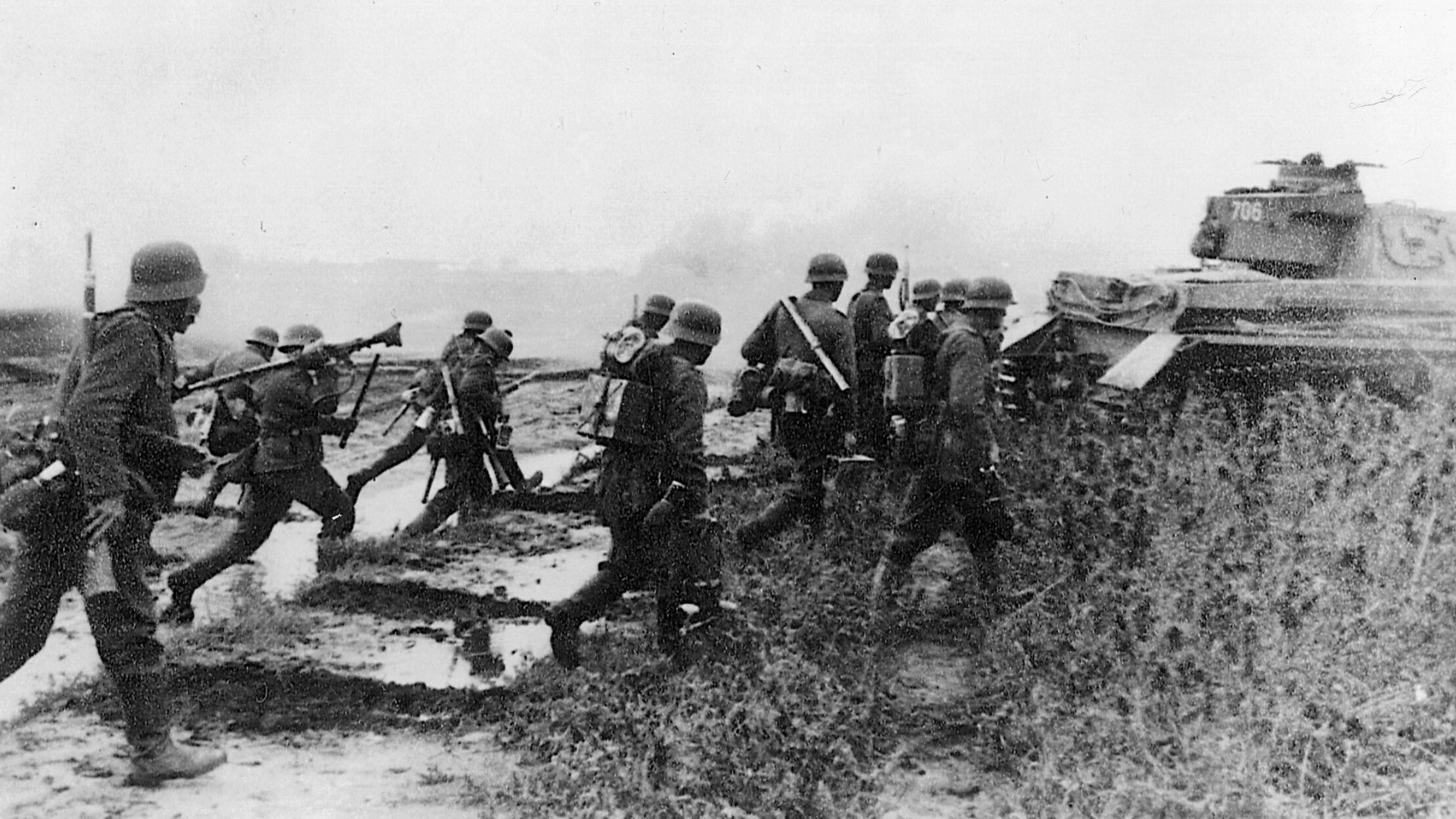By David A. Norris
It did not seem possible for them to hold on, yet six regiments of British infantry, standing with three battalions of Hanoverians, withstood a heavy artillery barrage on August 1, 1759, on a plain next to the fortress of Minden in the Electorate of Hanover. They repulsed two charges of French cavalry, then they fended off an attack by French-allied Saxon infantry.
Lieutenant Thomas Thomson of the 20th Regiment of Foot desperately hoped that reinforcements were on their way to assist the hardy musketeers. “Now was the time the English Cavalry should have come up; every eye was looking with impatience,” Thomson wrote afterward. But the horse soldiers were nowhere to be seen.
The British would look back in later years at 1759 as the annus mirabilis (miracle year) when the Seven Years’ War turned sharply in their favor. But the spring of 1759 found the British and their German allies in deep trouble in the French campaign against the King George II’s continental possession of Hanover.
At the time, George II of Great Britain also was the Elector of Hanover. The title of elector reflected the ruler’s membership in the select group of high-ranking secular princes and archbishops who chose the Holy Roman Emperor. The nearest Protestant successor to Queen Anne, who died in 1714, was George II’s father, George I. Thus, the elder George found himself crowned as monarch of one of Europe’s major powers. His son George II also ruled the British dominions and the middling north German state of Hanover. More than a few in Great Britain grumbled that the king seemed more concerned about his possessions in Hanover than those of the British Empire.
The Seven Years’ War, which began in 1756 and ended in 1763, found Great Britain straining to fight the French in Canada, the West Indies, and India, as well as on the Continent. Heretofore, George II was wary of the growing power of Frederick the Great’s Prussia, which was uncomfortably close to Hanover; however, this new war broke out with an unusual diplomatic twist. Austria and France ended years of enmity and went to war as allies. Empress Maria Theresa of Austria sought revenge against Prussia for loss of Silesia in the War of the Austrian Succession, which had ended in 1748. A new British-Prussian alliance gave Prussia London’s help against its powerful enemies and provided George II with Prussia as a shield to protect Hanover.
Among other setbacks in the war, the French defeated a Hanoverian and Hessian army at the Battle of Hastenbeck on June 27, 1757, near the town of Hamelin in Hanover. Hanoverian commander William, Duke of Cumberland, signed the Convention of Klosterzeven, an agreement that led to the disbandment of his army and the French occupation of Hanover. Although Cumberland was the son of George II and famous for his victory over the Scottish Jacobite rebels at the Battle of Culloden in 1746, he was disgraced and never held military command after the debacle of Hastenbeck.

At the insistence of Prime Minister William Pitt, George II appointed as commander of the Hanoverian army Duke Ferdinand of Brunswick-Wolfenbuttel, a younger brother of Brunswick’s ruler Charles I. Ferdinand had served with Frederick the Great’s army during the War of the Austrian Succession. Ferdinand proved his competence by defeating the French at Krefeld on June 23, 1758. The French were driven from Hanover, and George II rewarded Ferdinand’s success by sending 7,000 British troops to join him.
The first commander of the British contingent, Charles Spencer, Duke of Marlborough (grandson of the famed first duke), died suddenly in August 1758. London would come to regret replacing Marlborough with Lt. Gen. Lord George Sackville.
For a century, Britain’s Hanoverian kings, known as the “Four Georges,” carried on a tradition of quarrelling with their heirs. In 1759, factions of the British court gravitated toward King George II or his grandson and heir apparent, Prince George (the future George III). The king and his followers favored intervention in Germany and the Prussian alliance. The rival faction that was grouped around the crown prince, known as the “young court,” disliked Prussia. They preferred raids on the French coast and colonies over direct involvement in aid of Frederick the Great.
Stepping into Marlborough’s post, Sackville was not extended Marlborough’s powers of appointing his own replacement officers when necessary. Neither was he appointed to Marlborough’s place as master of ordnance. His limited status struck him as an insult by the king’s party, intended to heighten Ferdinand’s prestige at the expense of his own. Establishing trust and a good working relationship with Ferdinand was a necessity for someone in Sackville’s shoes, but instead he squabbled with the duke and seethed at perceived personal slights.
After Krefeld, the Comte de Clermont resigned as commander of France’s army in western Germany and was replaced by Marshal Louis Georges Erasme, Marquis de Contades. Early in the spring of 1759 Contades’ subordinate Victor François, Duc de Broglie, won a French victory at Bergen on April 13. Ferdinand’s plans for the upcoming campaign were dashed, and at that point affairs looked bright for the French. Contades’ 60,000-strong army included some Saxon infantry accompanying the French units.
Ferdinand’s army of 45,000 was mainly German, with large contingents from Hanover and Hesse and smaller contribution from Prussia and Brunswick. With them were six regiments of British infantry, a Royal Artillery contingent, and six regiments of British cavalry. A new draft of nearly 800 infantry recruits arrived from England early in April. The new men would make up roughly a quarter or a third of each of the six foot regiments.
French successes continued on July 9, when Broglie captured Minden on the left bank of the Weser. The medieval town of Minden stood inside a formidable array of walls and bastions begun in the 1500s. Below the walls the winding course of the Weser River, which flowed north past Bremen to empty into the North Sea at Bremerhaven, protected the Hanoverian territories to the east.
Ferdinand pulled back to the north after the fall of Minden. Part of his forces held Bremen, and he also secured his magazine at Nienburg. Contades captured Osnabruck, sent troops to impress supplies in Hanover, and threatened Hamelin, Lippstadt, and Munster.
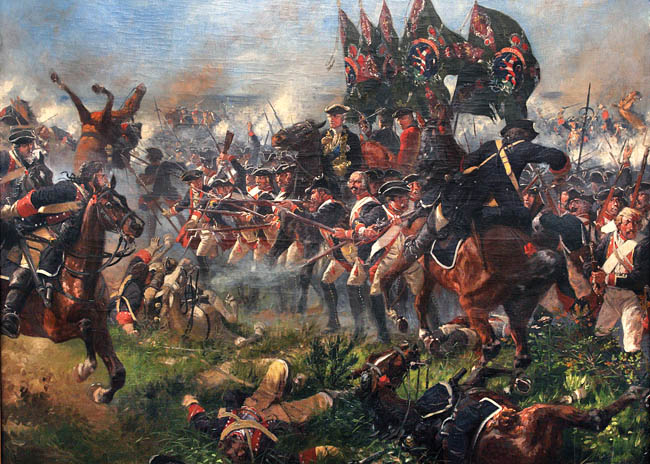
Although outnumbered, Ferdinand confronted Contades a few miles north of Minden. On July 17, Contades withdrew to Minden, choosing to avoid battle while his detached troops were making progress against the allies.
Contades and his main army camped south of Minden. In the French army’s front was the Bastau, a small stream that emptied into the Weser just south of the fortress walls. The Bastau meandered for eight miles through a morass approximately 200 yards wide. South of the morass, the terrain rose to a flat shelf of farmland where the French army camped. Behind the camps, to the south, was a long, wooded ridge. Across the old town bridge and two pontoon spans, the Duc de Broglie occupied the right bank of the Weser.
Camped at Petershagen, Ferdinand sent pickets ahead to occupy several villages north and west of Minden. The villages stretched in a shallow arc from Todtenhausen on the Weser southwest to Hille, which was eight miles west of Minden. By holding Hille, the allies perched close to Contades’ right, blocking the only causeway that crossed the marshes. Increasing the pressure on Contades, Lt. Gen. Georg August von Wangenheim’s corps of 10,000 troops moved to Todtenhausen on July 22.
Charles William Ferdinand, who as the eldest son of Charles I was hereditary prince of Brunswick, marched 10 miles west of Minden to Lubbecke. On July 27 the hereditary prince’s 6,000 men drove away the troops shielding the French left. Farther west, the allies recaptured Osnabruck one day later, blocking Contades’ main supply route.
Rather than assail Contades’ army behind its strong lines, Ferdinand hoped to draw the enemy out into the open. If harassment of the French supply and communication lines was not reason enough to lure the French out, Ferdinand dangled the tempting bait of a seemingly unprotected wing of his army. While leaving Wangenheim by the Weser at Todtenhausen, the rest of the allied troops marched west toward Hille, leaving a gap of several miles between the main army and the isolated detachment by the river. At the time, 10,000 of Ferdinand’s troops were miles away with the hereditary prince, and another detachment was away at Lubbecke.
Ferdinand’s risky weakening of his forces paid off by tempting the French out of their protected lines. Contades sent 8,000 men under Louis Hercule Timoleon, Duc de Brissac, to keep the hereditary prince from joining his forces to the main army. Sappers assembled eight bridges across the marshy Bastau, and the army moved forward in eight columns. Broglie was summoned from the opposite bank of the Weser to join the main army as the ninth column. With 51,000 men and 168 guns, Contades aimed at the allied force of 41,000 troops and their 170 guns.
A storm bore down from the west on the night of July 31. So heavy were the winds that the church bells in Minden could not be heard in the French camp as the soldiers marched across the bridges over the Bastau. Scarcely one hour after the French left their camps, the pickets of Frederick Erdman, Prince of Anhalt-Kothen, picked up two French deserters. Both men revealed that their army was on the march. Duke Ferdinand expected such a move and had already instructed his commanders to alert him at once if the enemy army showed signs of activity. Anhalt, though, disbelieved the deserters. The prince dithered for a couple of hours before sending a courier, so it was 3 am on August 1 before word of the French moves arrived at Ferdinand’s headquarters at Hille.
In moments, orders flew to the allied generals. They were already prepared to move in eight columns, with infantry in the center and cavalry on each flank. The right column was composed of 24 squadrons of cavalry (15 British and nine Hanoverian) under Lord Sackville. Sackville’s column was followed by a German artillery column, which in turn was followed by Maj. Gen. August Friedrich von Sporcken’s six British foot regiments. The British artillery was grouped in four brigades under captains Forbes MacBean, Duncan Drummond, Edward Foy, and William Phillips, with the latter in overall command.
Most of the troops promptly left camp, but Sackville’s column was not ready to move, and no one could find its commander. Ferdinand had greatly offended Sackville with his assignment. Although the head of all the British troops on the field, the duke ordered him to lead only the right flank’s cavalry minus his infantry regiments.
Duke Ferdinand pushed ahead, accompanied by only one staff officer, to survey his army. One of his first goals was to take Hahlen because possession of the village would menace the French left flank. After the delays caused by Anhalt and Sackville, the duke worried that the enemy would snap up the village before his own men could get there.
The duke rode to another village, Hartum, perhaps one mile west of Hahlen. He rousted his pickets and rushed them toward Hahlen and then galloped toward that point himself. Yet it was too late; French troops already held the village. Even worse, there was no word from Wangenheim’s corps. He could hear no gunfire coming from Todtenhausen, but he knew the gusty winds might be drowning out the noise of a brisk cannonade. Ferdinand dispatched the only staff officer with him to ride to Wangenheim. Now with only a groom for company, the duke rode to the plains before Minden. After dawn, heavy smoke rose from Todtenhausen, indicating that Wangenheim was engaged with the enemy.
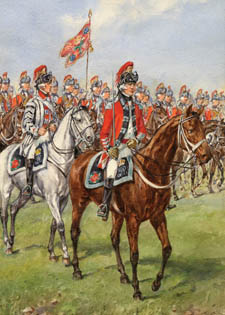
From the right, the duke heard gunfire coming from the 500 men and a pair of cannons posted at Hille near the causeway across the Bastau. A six-gun French battery had opened fire in hope of distracting Ferdinand’s attention. Rightfully regarding the French battery as a minor threat, he only summoned the troops at Lubbecke and ordered two more guns sent to Hille.
Anhalt again tangled the duke’s plans. He led the pickets from Hartum, but finding the French settled into Hahlen, he simply halted. Stirred to action by Ferdinand’s orders, Anhalt seized Hahlen without much trouble. Rather than press the enemy further, he stayed in the village.
To aid the troops at Hahlen, the duke sent Captain Foy’s battalion of artillery. Foy’s gunners put up a brisk fire, and the enemy made no attempt to drive away Anhalt’s troops.
Contades’ timing was also thrown off in the early morning hours. He had to push his regiments across the Bastau during the stormy night hours; marching them in the light of day would have exposed them to attack as they strode out of the morass. Their officers did not have them deployed until well after daylight.
Dawn found the French army arranged in a great convex arc, as if shielding the fortress of Minden. Their troops were still shuffling into place, with infantry holding the flanks and the cavalry in the center. On their right confronting Wangenheim was Broglie, with the Grenadiers Royaux and Grenadiers de France in his front line. The latter was an unusually large regiment of 48 companies requiring an expanded contingent of field officers. As the columns to Broglie’s left were not in place, he waited with his foot and horse troops, leaving his artillery to bombard the enemy.
If Broglie expected to surprise Wangenheim, he was disappointed. His soldiers encountered an entire division prepared for battle rather than scattered pickets. Ferdinand planned for his detachment at Todtenhausen to hold on long enough to assemble his forces and throw them united against the French. Wangenheim was well entrenched and backed up with 30 guns.
Foy’s cannons still played on the French left. Encouraged by their success, Ferdinand sent Captain MacBean’s 10-gun artillery battalion and Major Haase’s Hanoverian artillery battalion to join them.
Sporcken, with his British and Hanoverian troops, waited by the guns defending Hahlen. Lieutenant Hugh Montgomery of the 12th Regiment of Foot wrote that his regiment was roused as early as 4 am, and by 7 am it drew up in a valley. On the day before the battle, soldiers of Montgomery’s regiment and their fellow British units marched past hedgerows and gardens bearing fresh blooming roses. Many of the redcoats were still wearing the roses they had plucked during that peaceful interlude on their hats and in their buttonholes.
The fleeting sweet scent of the moist roses would soon be smothered in sulfurous powder smoke. Ferdinand sent a courier informing Sporcken that when he received orders to advance his soldiers were to march to the beat of their drums.
Shortly thereafter, Ferdinand was shocked to see that Sporcken’s front line was in motion. The duke’s aide had delivered his orders verbally in French. The foot officers misunderstood the aide to mean that they should immediately advance on the enemy with drums beating.
Several of the duke’s aides galloped to head off the premature attack. Word reached Sporcken’s forward line, which halted behind the cover of a stretch of fir trees, but only for a short time. Then, as the drums pounded again, Maj. Gen. John Waldegrave led the front line forward, with the British 12th, 37th, and 23rd Regiments of Foot on the right and the Hanoverian Guards on the left. The regiments marched straight toward the French center, manned by three lines of the cavalry of the Duc de Fitzjames, a grandson of King James II, the Stuart monarch deposed in the Glorious Revolution of 1688.
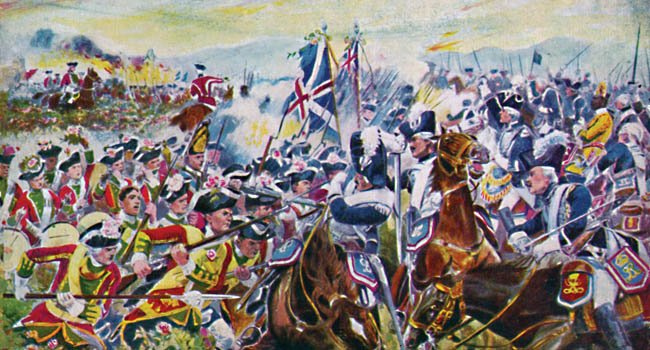
Seeing Waldegrave move out, Colonel William Kingsley led Sporcken’s second line, composed of the British 20th Regiment and three Hanoverian battalions, in support of the first line. Waldegrave and Kingsley pressed ahead, caught in the crossfire of 60 French guns. Lieutenant Montgomery and the 12th Foot were on the right flank of the front line when “an 18- pound ball came rolling gently up to us; now began the most disagreeable march I ever had in my life, for we advanced more than a quarter mile through a most furious fire from a most infernal battery of 18 pounders, which was at first upon our front, but as we proceeded, bore upon our flank, and at last upon our rear.” Cannon balls slashed through their ranks, but the soldiers marched on without hesitation.
“I was almost knocked off of my legs by my three right-hand men, who were killed and drove against me by a cannon ball, the same ball also killed two men close to [Ensign Charles] Ward, whose post was in the rear of my platoon,” recalled Montgomery. Twice Montgomery was struck by spent musket balls, and another ball pierced his coat. “My spontoon was shot through a little below my hand,” wrote Montgomery. He later replaced it with a captured French spontoon.
Lieutenant Thomas Thomson of the 20th Foot found the action as hot as did the redcoats of the 12th Foot. The enemy guns were “ill served at first, but they soon felt us, and their shot took effect so fast, that every officer imagined the battalion would be taken off before we could get up to give a fire … my right-hand file of men not more than a foot from me were all by one ball dashed to pieces, and their blood flying all over me; this, I must confess, staggered me not a little,” wrote Thomson. But a spent musket shot that bruised his arm also snapped his attention away from the horror and steadied him.
When the infantry was within 100 yards of the French line, 11 squadrons of cavalry under Marquis Charles de Castries charged them. Waldegrave’s redcoats held their fire until the enemy horsemen had galloped within 30 yards, according to Montgomery. Then, a British volley cut down dozens of riders and horses. The momentum of the charge carried some of Castries’ men forward, and Montgomery saw that “they rode down two companies on the right of our regiment, wounded three officers, took one of them prisoner with our artillery lieutenant and whipped off the tumbrels.”
The French horsemen gained little else from their charge, though. When they came to a halt after cutting through the British line, Waldegrave’s companies turned around to fire into the enemy cavalry just as Kingsley’s second line unleashed a volley from behind them. Castries’ cavalry wheeled about and surged back into Fitzjames’ line, leaving behind many dead or wounded on the field.
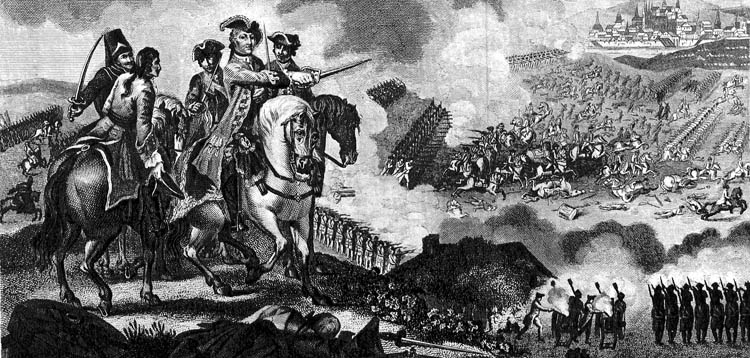
Ferdinand saw the repulse of the French cavalry. He sent Captain Wintzingerode, a Hessian aide-de-camp, with orders to Sackville, who waited with the cavalry of the right flank. These horse regiments were arrayed by a windmill near Hallen. If it were not for a stand of fir trees, they would have been able to see Waldegrave’s and Kingsley’s embattled infantry to their left and somewhat in front. Wintzingerode relayed the commander’s orders in French to pass his cavalry through the woods on his left, move forward onto the heath, and relieve the foot soldiers.
Instead of advancing, Sackville argued with the aide. He repeatedly asked how that was to be done. For his part, Wintzingerode saw the woods as open and with no bushes or underwood, but Sackville deemed them impassible. The Hessian repeated his orders in French and then tried to explain the details in his limited English. He saw Sackville turn to speak to his officers. Confident that the cavalry would move, the aide rode back to rejoin Ferdinand’s staff.
Sackville not having responded to his orders, Ferdinand sent a second aide-de-camp, Captain Edward Ligonier, to urge Sackville to action. Instead of passing through the woods to his left, Sackville pushed forward a short distance and stopped.
As the French cavalry rallied, four brigades of infantry and 32 guns were pushed ahead to fire on Sporcken’s redcoats. The second line of Fitzjames’ cavalry, still fresh, “came upon us like lightning,” wrote Montgomery. Ferdinand, aware that Sackville was standing still, sent Captain William Phillips’ artillery brigade just in time to lend its support to the foot soldiers.
Once again, Sporcken’s troops shattered and hurled back a cavalry charge. They then repulsed an advance of enemy infantry. Lieutenant Thomson was then hit by a musket ball. “I found myself fainting,” he said. Thomson set out for the rear to find a surgeon.
A wounded soldier supported Thomson on his way, while “the balls came as thick as in the front,” Thomson recalled. Thomson’s companion was struck down. “His left leg was carried away by a cannon ball, the wind of which fairly turned me round, but did not hurt me otherwise,” wrote Thomson.
The common was strewn with dead and wounded men and horses. On the leeward side of those horses lay wounded soldiers that could not get any farther. Thomson fell in with a wounded captain, and the two walked three miles in search of a surgeon. They stumbled across Sackville’s coach, and they were attended by the lord’s personal surgeon. The surgeon was one that Sackville “need not have had, as there was no danger of his being hurt, as you will soon find by the Vox Populi,” noted Thomson.
As Montgomery and Thomson wondered about Sackville’s whereabouts, Ferdinand sent yet another aide, Colonel Charles Fitzroy, to the cavalry commander. Fitzroy conveyed the duke’s new orders to send the British horse battalions forward. Sackville, still accompanied by Ligonier, snapped that he was being given contradictory orders. Proclaiming that the aides had misunderstood their orders, he angrily halted his cavalry again. Meanwhile, Fitzjames stabilized his lines, and the chance for a breakthrough in the French center faded away.
After fretting so long for the arrival of his cavalry, Duke Ferdinand lost his temper. “Good God!” he shouted. “Is there no means of getting the cavalry to advance?” He sent yet another set of orders with Wintzingerode. The orders instructed John Manners, Marquess of Granby, to bring up the second line. Fitzroy had ridden ahead to speak with Ferdinand, and he explained Sackville’s failure to heed his orders. Ferdinand sent Fitzroy across the battlefield once again, also with orders for Granby, stating, “I know he will obey me.” Sackville, though, halted Granby and angrily rode to confront the duke and ask the meaning of this barrage of orders.
In the center, Waldegrave and Kingsley held on. Kingsley’s horse, shot four times, collapsed and trapped the general on the ground. Saxon troops pushed across that part of the field twice; but at last, Kingsley pulled himself from under his dead horse and made his way back to his brigade. His hat and uniform were punctured with bullet holes. “Look at the old boy, he’s well peppered!” quipped an enlisted man. When Sackville finally met Ferdinand face to face, the exasperated duke held his temper, coldly responding, “My lord, the opportunity is now passed.” Despite the lack of help from Sackville, the allied infantry closed the gap between the main army and Wangenstein. British and German guns swelled in number and began to overwhelm Contades’ artillery.
At Todtenhausen, the Grenadiers de France under the Marquis de Saint-Pern came under heavy fire from the British guns. Saint-Pern saw his men waver as incoming cannon balls slashed through their ranks. To steady his soldiers, he rode in front of them and took out his snuffbox. “Well, my boys, what’s the matter, eh? Cannon?” he asked. “Well, it kills us, it kills us, that’s all, my boys. March on, and never mind it.”
Thomas-Alexandre-Marc d’Alsace, Prince de Chimary, colonel of one Saint-Pern’s grenadier battalions, was mortally wounded. Stepping into his place was another colonel, Michel Roche Gilbert du Motier, Marquis de la Fayette. La Fayette held command only a short time before he, too, was mortally wounded. The marquis’s son Gilbert, who at that moment was five days from his second birthday, inherited his title. The youngster would grow up to be the legendary Marquis de Lafayette who played a central role with the army of General George Washington during the American Revolution.
Despite Sackville’s refusal to bring up his cavalry, the half-dozen British regiments on the left endured everything the enemy could throw at them. “Not one platoon in the whole army,” stated the London Gazette, “gave way a single step during the whole action.” By 9 am, the allied right surged forward. In the absence of British cavalry, Ferdinand’s German horse regiments tore into the French lines. Within another hour, Contades’ regiments were driven from the field. They ran for shelter by the guns of the fortress, or crossed to the south side of the morass.
One of the French infantry regiments left exposed by the collapse of the cavalry in their center was the Regiment d’Auvergne under Colonel Jean-Baptiste Donatien de Vimeur, Comte de Rochambeau. This regiment held steady, and its stubborn withdrawal helped much of the broken army escape. Rochambeau would later command the French army that aided Washington’s Continental forces in the Yorktown Campaign.
Normally at this stage of an 18th-century land battle, cavalry would have been thrown at the fleeing enemy. Yet at Minden two artillery battalions spearheaded the pursuit. Foy’s and MacBean’s gunners found new firing positions, tossed a few shots, then hitched up their horses and pulled the guns forward again. The artillery finally came to a halt at the edge of the high ground north of the Bastau where it kept up a steady fire to drive Contades’ men out of range across the marsh.
For Contades, the last straw was the news that the hereditary prince’s troops had driven away the Duc de Brissac, cutting him off from his forces to the west. On the night of August 1, Contades retreated across the Weser, destroying the bridges behind him. Minden’s 2,800-man garrison surrendered to Ferdinand on August 2.
“I have seen what I never thought to be possible [that] a single line of infantry break through three lines of cavalry ranked in order of battle and tumble them to ruin,” Contades lamented. Public announcements acknowledged that the disaster at Minden cost Contades 7,000 men killed, wounded, or captured, but the commanders cited higher figures in private letters. Forty-three guns were left on the field along with much of the army’s baggage and 17 standards.
Ferdinand’s losses came to approximately 3,000, of which nearly half were British. By one official account, of the 3,198 British soldiers in the six regiments involved in the battle, 294 were killed, 1,037 wounded, and 67 missing, for a total of 1,398. Casualties in the British artillery battalions amounted to another 20 men.
In a letter written to his mother, Lieutenant Montgomery added a postscript to the clash. “The noise of the battle frightened our sutler’s wife into labor,” he wrote. “The next morning she was brought to bed of a son, and we have had him christened by the name of Ferdinand.”
For a short while, Sackville’s rank and position shielded him from reproach. Hours after the battle, he calmly sat down to join Ferdinand and the other generals at dinner. “The man sits here as if he had performed wonders!” remarked Ferdinand. Nothing was said openly for some time, but officers shared their disgust in personal letters and quiet conversations, and the affair became public knowledge.
After the battle Ferdinand warmly praised many officers. Of Lord Granby, the duke wrote, “He is convinced that had he been fortunate enough to have had him at the head of the cavalry of the right wing, his presence would have greatly assisted in bringing the day to a far more complete and more brilliant issue.” The glowing commendations made no mention of Sackville. Ferdinand not only left Sackville out of his post-battle congratulatory orders, he even wrote to George II, requesting Sackville be recalled.
Eventually Sackville demanded a court-martial in Britain. His conduct at Minden remains something of a mystery. He had demonstrated courage and competence on several battlefields before 1759. Some commentators, including the gossipy writer and politician Horatio Walpole, saw the problem as the climax of a personality clash between Sackville and Ferdinand; the general had never gotten along with the duke and resented many of his decisions. He would not be the first commander to let pride in his aristocratic title and high rank get in the way of his duty.
In his defense at the court-martial, he pointed out that he was in wooded terrain unfavorable to cavalry and claimed that Ferdinand issued him numerous obscure and contradictory orders. Any one point regarding an objection to one order or another might have carried weight, but the overriding intent of the duke’s five separate orders to pitch the cavalry into the battle was abundantly clear. The court-martial inevitably found Sackville guilty of disobedience of orders. He was dismissed from the army with the proviso that he could never return to military service.
Sackville, though, returned to power and influence. George II died in 1760, and his grandson George III had sided with Sackville during the court-martial. Sackville was back in royal, if not military, favor. He inherited a large estate in 1770 and adopted a family surname, Germain. As Lord Sackville-Germain, he was made the colonial secretary by Lord Frederick North’s administration in 1775, just as the American colonies rose in rebellion.
Overshadowed in historical memory by the fall of Quebec, which changed the course of North American history, Minden nonetheless altered the direction of the war in Europe. It was the last time the French threatened Hanover during the conflict, and the battle left Prussia safer along its western borders.
Remembered with pride by the British Army, Minden Day is still marked annually by the successor regiments of the British units that fought there. Roses tucked into modern-day military headgear echo those plucked from the hedgerows by the redcoats before the battle.
